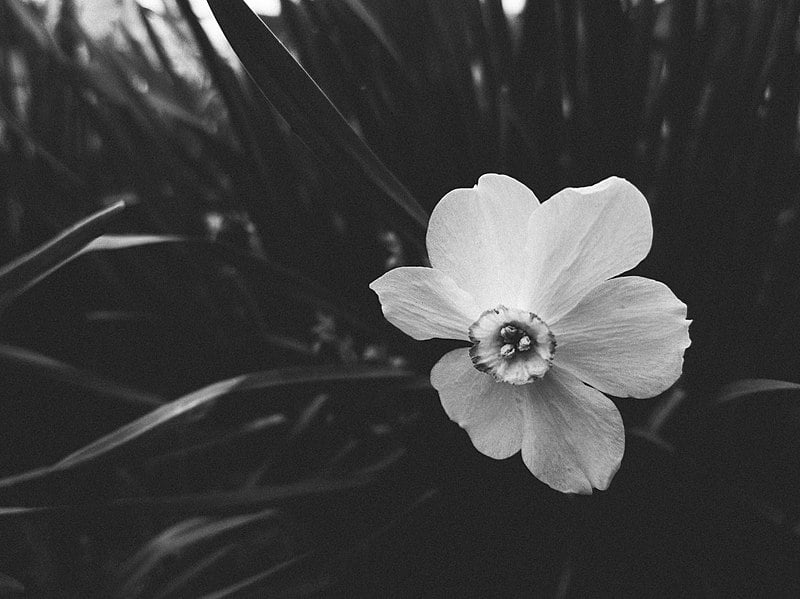Loss is an inevitable part of life, and it often brings a profound sense of sadness and grief. In times of mourning, people seek solace and comfort in various ways, including the use of flowers. Flowers have been used for centuries to express emotions and convey messages, and their symbolism can provide a meaningful way to navigate the challenging journey of loss. In this article with Impeccable Nest, we explore the significance of flowers in the face of loss, how they can be used to honor loved ones, and how they offer hope and healing during difficult times.

Features of Memorial Flowers
There are a few key features that make certain flowers appropriate for funerals, memorials and times of loss:
- Symbolic meaning – Flowers like lilies symbolize purity, roses represent love and carnations signify admiration. Their symbolism resonates when remembering a loved one.
- Color – White flowers represent innocence and purity, making them popular funeral flowers. Deep red blooms signify grief and sorrow.
- Fragrance – Flowers like roses, lilies and gardenias have a sweet fragrance that suggests the sweetness of memories. Their scent is soothing and evokes emotion.
- Somber appearance – Flowers with a regal or elegant appearance like calla lilies, orchids or gladiolus suit solemn occasions. Their dramatic blooms have a serious beauty.
Top 15 Flowers Meaning Loss
White Lily
The White Lily flower holds a significant meaning when it comes to loss and grief. It is commonly used in funerals and memorial services, making it a symbol of comfort and remembrance for those who have lost a loved one. The white lily represents purity, innocence, and the journey towards the afterlife.
The color white has long been associated with purity and cleanliness, and the white lily perfectly embodies this symbolism. Its delicate white petals represent the pure nature of the soul and its innocence, which is often associated with the loss of a loved one. This flower symbolizes the idea that the departed soul has been cleansed of all their earthly impurities and has embarked on a new journey towards the afterlife.
In many cultures and religions, the white lily is believed to guide the soul of the departed to the afterlife. It is seen as a guiding light that leads the way for the deceased to reach their final destination. This belief brings a sense of peace and comfort to those who are mourning the loss of their loved ones. It gives them hope that their loved one’s soul will find its way towards eternal peace and happiness.

As the white lily is often used in funerals and memorial services, it has become deeply associated with death and loss. Its presence in these somber occasions brings a sense of calmness and serenity, making it a suitable flower to use during times of grief. The beauty and elegance of the white lily serve as a gentle reminder that even in the midst of sorrow and pain, there is still beauty and hope to be found.
Moreover, the white lily also symbolizes rebirth and resurrection. Its ability to bloom and thrive even in the most challenging conditions represents the cycle of life and death. It reminds us that although our loved ones may have left this world, they will always remain with us in spirit, and their memory will continue to live on through us.
The white lily holds a powerful meaning when it comes to loss and grief. Its purity, innocence, and association with guiding souls to the afterlife make it a fitting symbol for those who have departed from this world. It brings comfort, peace, and hope in times of sorrow, reminding us that even in death, there is still beauty and meaning to be found.
Red Rose
The red rose has long been associated with love, passion, and romance. However, this beautiful flower also holds a deep meaning when it comes to loss and grief. The vibrant and intense red color of the rose symbolizes strong emotions, making it a perfect representation of the complex feelings that come with losing a loved one.
In many cultures, the red rose is often used at funerals or memorial services as a way to express sorrow and pay tribute to the deceased. The deep hue of the red rose represents the depth of sadness and grief felt by those left behind. It serves as a powerful symbol to convey the message that the person who has passed away will be deeply missed and their absence will be mourned.

Moreover, the red rose also signifies love and respect for the departed. By giving red roses, we are saying that even though the person may no longer be with us physically, they will always hold a special place in our hearts. This sentiment is especially true when it comes to honoring the memory of a loved one who has passed away.
The red rose further conveys the message of eternal love and devotion. It is a way to express that the bond shared with the departed is unbreakable, even in death. The deep color of the rose represents the intensity of the love and connection that existed between the deceased and those who are grieving.
Additionally, red roses are often placed on gravesites as a way to decorate and commemorate the resting place of the departed. The beauty and vibrancy of the rose serve as a reminder that although life may have ended, the memories and legacy of the individual will continue to live on.
The red rose holds a powerful and significant meaning when it comes to expressing loss and grief. Its deep color represents the intensity of emotions felt, while its association with love and devotion serves as a reminder that the bond between the living and the departed never truly ends. By giving red roses, we are honoring and paying our respects to those who have passed away, while also expressing our love for them. It is a beautiful and poignant way to show our sorrow and love for the deceased.
Calla Lily
Flowers have long been used as symbols to express a wide range of emotions and sentiments. They are often given as gifts or used in various ceremonies and rituals to convey love, joy, sympathy, and even grief. One such flower that holds a powerful meaning of loss is the Calla Lily.
The Calla Lily, also known as the Arum Lily or Zantedeschia, is native to Africa and gained its name from the Greek word “kallos,” which means beauty. This elegant flower features a distinctive trumpet shape with a long, white spathe surrounding a yellow spadix at its center. It is this unique and striking appearance that has made the Calla Lily a popular choice for funerals and memorial services.
The trumpet-like shape of the Calla Lily symbolizes the fragility and beauty of life. The flower starts out as a small bud and gradually opens up into a stunning bloom, only to wither and fade away after a short period. This fleeting nature of the Calla Lily represents the ephemeral nature of human life and serves as a reminder that nothing lasts forever.

Moreover, the color white is often associated with purity, innocence, and spirituality, making it a fitting choice for funeral flowers. In some cultures, white flowers are believed to carry the soul of the deceased to the afterlife, making the Calla Lily an appropriate tribute to honor the departed.
In addition to its symbolism, the Calla Lily is also a common funeral flower because of its availability and affordability. Funeral arrangements can be costly, and the Calla Lily provides a budget-friendly option without compromising on elegance and significance. Its simple yet exquisite appearance can add a touch of grace and solemnity to any funeral service or memorial.
The Calla Lily holds a deep and meaningful symbolism that perfectly captures the essence of loss. Its trumpet shape represents the beauty and fragility of life, while its white color symbolizes purity and spirituality. As a common funeral flower, the Calla Lily offers a poignant tribute to honor those who have passed away and serves as a reminder to cherish and appreciate the fleeting moments of life.
Orchid
Flowers have long been used as a form of expression, conveying various emotions and sentiments through their delicate blooms and vibrant colors. One particular flower that holds a deep meaning in expressing loss and grief is the orchid.
The orchid is a unique and exotic flower known for its striking and delicate appearance. It comes in a variety of colors and shapes, each with its own symbolic meaning. However, one common theme among all orchids is their association with luxury and fragility of life.
The exotic nature of the orchid makes it stand out from other flowers, making it a popular choice for those looking to convey a sense of elegance and sophistication. However, beyond its outward beauty lies a deeper meaning that connects this flower to the concept of loss.
The orchid’s symbolism of luxury and delicacy ties in with the idea that life itself is fleeting and fragile. Just like the flower’s short blooming period, life can be unpredictable and can end abruptly without warning. Therefore, when giving an orchid to someone grieving a loss, it serves as a reminder of the fleeting nature of life and the importance of cherishing every moment.
Moreover, the orchid’s delicate and intricate appearance also reflects the complexity of human emotions, especially during times of loss and grief. The flower’s delicate petals and intricate patterns symbolize the range of emotions that one may experience while mourning the loss of a loved one. From sadness and pain to gratitude and appreciation for the memories shared, the orchid represents the multifaceted nature of grief.
Furthermore, the orchid’s association with luxury adds another layer of meaning to its symbolism of loss. In times of grief, people often turn to material possessions or experiences to console themselves. The orchid, with its association with wealth and luxury, serves as a reminder that even in times of loss, it is essential to find moments of joy and beauty in life.
In some cultures, the orchid is also believed to have healing properties and is used in traditional herbal medicine to ease emotional pain and promote inner peace. This further strengthens the flower’s significance as a symbol of comfort and solace during times of loss.
The orchid’s delicate and exotic blooms hold a deep meaning in expressing loss and grief. Its association with luxury and fragility of life serves as a reminder to cherish every moment and find beauty in the midst of sorrow. Whether given as a gift or used in mourning rituals, the orchid conveys a message of understanding and empathy towards those experiencing loss and grief.
Poppy
Flowers have been used throughout history to convey various meanings and emotions. One of the most powerful messages that can be conveyed through flowers is the concept of loss. Loss is a universal human experience, and people often turn to flowers as a way to express their condolences and honor the memory of someone who has passed away. Among the many flowers that hold special significance in representing loss, the poppy stands out as a powerful symbol.
The poppy flower has a long and rich history, with its origins dating back to ancient civilizations such as the Sumerians and Egyptians. In Greek mythology, the poppy was associated with Demeter, the goddess of agriculture and fertility, and it was believed to have healing powers. The Romans also held the poppy in high regard, using it for medicinal purposes and as a symbol of peace and sleep.
In modern times, the poppy has come to represent a variety of emotions and concepts, including loss. The red poppy, in particular, has become synonymous with remembrance and honoring the sacrifices of soldiers who have died in wars. This association can be traced back to the famous poem “In Flanders Fields” by John McCrae, which was written during World War I and references the poppy fields growing over the graves of fallen soldiers.

One of the main reasons why the poppy is often used to represent loss is due to its delicate and ephemeral nature. Poppies have a short lifespan, blooming only for a few days before their petals fall off. This fleeting beauty can symbolize the fragility of life and serve as a reminder to cherish every moment we have with our loved ones.
Additionally, poppies are often used in funeral arrangements as a way to honor and remember the deceased. They can be incorporated into wreaths, bouquets, and other floral tributes, adding a touch of color and symbolism to the somber occasion. The poppy’s association with sleep also makes it a fitting choice for funerals, as it can represent the deceased finding eternal rest.
Furthermore, the poppy’s connection to peace adds another layer of meaning when it comes to representing loss. In times of grief and sorrow, it is common for people to seek comfort and solace in the hope of finding peace. The poppy can serve as a visual reminder of this desire for peace and can bring a sense of calm and serenity to those who are mourning.
The poppy holds great significance in representing loss, evoking emotions of sleep, peace, and remembrance. Its rich history, delicate nature, and strong symbolism make it a meaningful choice for honoring the memory of loved ones who have passed away. As we continue to navigate through the journey of life, the poppy remains a poignant reminder to cherish every moment and honor the memories of those we have lost.
Iris
The iris is a stunning flower that holds a special meaning for many people. It symbolizes hope and faith, making it the perfect flower to represent loss. Losing someone or something dear to us can leave us feeling hopeless and uncertain about the future. However, the iris reminds us to have faith and find beauty in the world even in difficult times.
The name iris comes from the Greek word for rainbow, which is fitting as this flower comes in a variety of beautiful colors such as purple, blue, white, and yellow. The vibrant colors of the iris reflect the light in one’s life, bringing a sense of positivity and optimism. This is especially meaningful when dealing with loss, as it reminds us to focus on the good memories and the joy that our loved ones brought into our lives.
In addition to its symbolic meaning, the iris also has a rich history and mythology behind it. In Greek mythology, the iris was said to be the messenger of the gods, carrying messages between heaven and earth. This ties into the idea of the iris representing hope and faith, as it is seen as a bridge between two worlds. It is also believed that the root of the iris plant can help alleviate grief and bring comfort to those who are mourning.

The iris is not only a symbol of hope and faith, but it also represents wisdom and courage. The tall, elegant stem of the iris suggests strength and resilience in the face of adversity. Its distinct shape, with three large outer petals and three smaller inner petals, has also been associated with the Holy Trinity in Christianity.
Moreover, the iris is a popular flower in funerals and memorial services. Its timeless beauty and meaningful symbolism make it a fitting tribute to honor the memory of a loved one who has passed away. Gifting an iris bouquet to someone who is grieving can serve as a heartfelt gesture of love and support during their time of loss.
The iris holds a special place in the language of flowers as a symbol of hope and faith in times of loss. Its vibrant colors, rich history, and meaningful symbolism all contribute to the profound significance of this flower. Whether it is used in a funeral arrangement or given as a thoughtful gift, the iris serves as a beautiful reminder to find light and strength in the midst of darkness.
Daisy
The Daisy flower is a symbol of innocence and purity, and it is often associated with feelings of hope and new beginnings. This delicate flower has been used as a symbol in various cultures, religions, and mythologies throughout history. The name “Daisy” comes from the Old English word “daes eage,” which means “day’s eye.” This is because the flower opens its petals during the day and closes them at night, resembling the opening and closing of an eye.
One of the main meanings of the Daisy is innocence. Its white petals represent purity and simplicity, making it a popular choice for bridal bouquets and other wedding decorations. In fact, in Victorian times, Daisies were often given to young women to symbolize their youth and innocence. This association with innocence also makes the Daisy a common flower used in children’s literature, often representing the pure and innocent nature of a child.

Another interpretation of the Daisy’s meaning is hope. The bright and cheerful appearance of the flower, with its yellow center and white petals, brings to mind feelings of optimism and positivity. It is often seen as a reminder to keep a positive outlook on life, even during difficult times. This message of hope is emphasized by the fact that Daisies are resilient flowers that can thrive in various types of soil and climates, making them a symbol of adaptability and perseverance.
The Daisy is also closely linked to new beginnings. As mentioned before, the flower opens its petals during the day, representing a fresh start each morning. This aspect of the Daisy’s symbolism is particularly poignant when dealing with loss. Losing someone or something important in our lives can be incredibly difficult, but the Daisy reminds us that there is always a chance for new beginnings. It encourages us to look forward with hope and embrace the future, no matter what challenges may come our way.
In addition to these general meanings, the color of the Daisy can also bring additional layers of symbolism. For example, yellow Daisies are often associated with happiness and friendship, making them a popular gift for loved ones. Pink Daisies, on the other hand, represent gratitude and appreciation, making them a meaningful gift to show someone how much they mean to you.
The Daisy carries a powerful message of innocence, hope, and new beginnings. Its delicate appearance and cheerful colors make it a popular choice for various occasions and events, whether it be to celebrate love and marriage or to provide comfort during difficult times. Its meaning of loss is not one of sadness, but rather one of looking forward with optimism and finding strength in new beginnings.
Forget-Me-Not
The Forget-Me-Not flower has long been associated with the meaning of loss, particularly in remembrance of a loved one who has passed away. This small blue flower, with its delicate petals and bright yellow center, holds a deep symbolism that represents eternal love and the concept of never forgetting those who have left us.
The name “Forget-Me-Not” itself carries a poignant message – a plea not to forget the person who has passed away. It is said that this flower received its name from a medieval German legend. According to the legend, a knight and his lady were walking along the side of a river. The knight picked some flowers for her but was swept away by the current while doing so. As he was being carried away, he threw the bouquet of flowers to his beloved and shouted, “forget-me-not”. From then on, the flower became known as a symbol of remembrance and true love.
In Victorian times, when sending flowers was used as a way to convey unspoken messages, the Forget-Me-Not was commonly given to express the sentiment of “remember me forever” or “never forget me”. It was also often included in sympathy bouquets to express condolences and to remind the grieving family that their loved one will always be remembered.
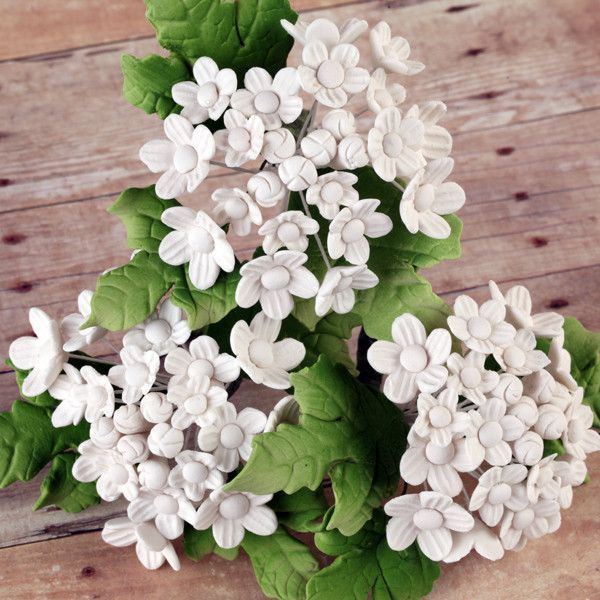
But more than just a symbol of remembrance, the Forget-Me-Not also represents the idea of eternal love. Its small, delicate appearance may seem fragile, but it actually has a strong and resilient nature. This quality has made it a beloved flower among couples, representing the promise of everlasting love and commitment.
The Forget-Me-Not is also connected to the concept of never forgetting the deceased. Its beautiful blue color is said to represent the blue of the heavens, reminding us that our departed loved ones are watching over us from above. This brings comfort and reassurance to those who are grieving, knowing that their loved ones are still with them in spirit and will never be forgotten.
In some cultures, the Forget-Me-Not is also believed to have healing properties and is used in herbal medicine to treat ailments such as headaches, eye infections, and respiratory issues. This further adds to its symbolism of enduring love and the ability to heal wounds caused by loss.
The Forget-Me-Not holds a profound meaning of loss, remembrance, eternal love, and the assurance that our departed loved ones will always have a special place in our hearts and memories. Its simple yet powerful message serves as a reminder to cherish the moments we have with our loved ones and to never take them for granted.
Chrysanthemum
The chrysanthemum is a flower that holds deep cultural significance in many parts of Asia, particularly in Japan and China. In these countries, the chrysanthemum has been associated with funerals and mourning for centuries.
One of the main reasons why the chrysanthemum is commonly used in funerals is because of its symbolism of longevity. The flower itself has a long lifespan, often blooming well into the autumn months. This represents the belief that the souls of the departed will also have a long life in the afterlife. This association with longevity also brings a sense of comfort to those who are grieving, as it suggests that their loved one’s spirit will continue to live on.
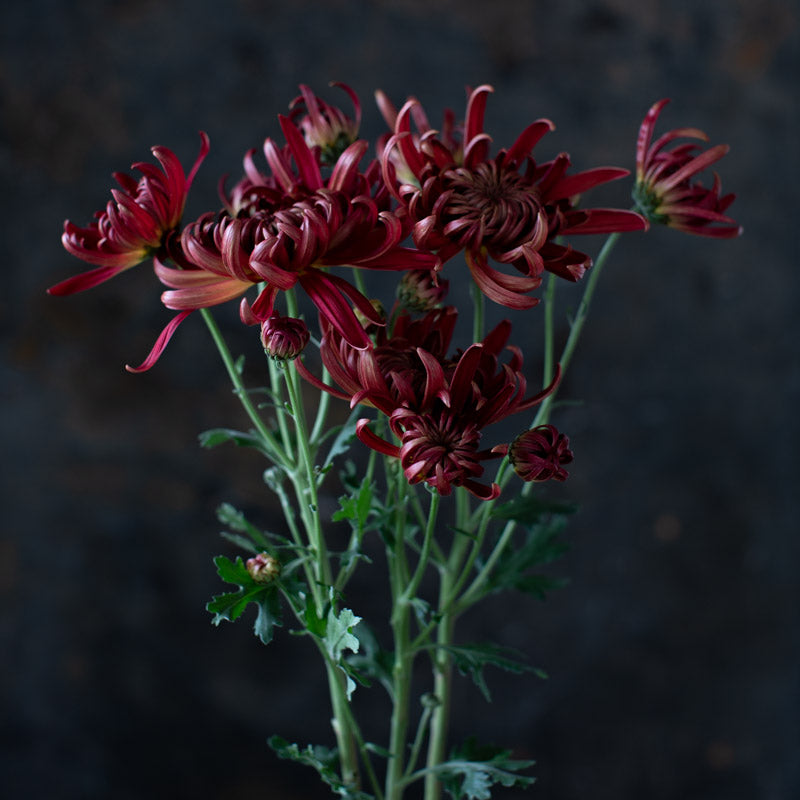
Additionally, the chrysanthemum is believed to possess powerful cleansing properties. In traditional Chinese medicine, the flower is used to purify the body and restore balance. This cleansing aspect of the chrysanthemum is said to help ease the transition of the soul into the afterlife. As such, it is often placed on altars or near the deceased during funeral ceremonies.
Furthermore, the chrysanthemum’s various colors hold different meanings in relation to loss and grief. The most common colors used in funeral arrangements are white, yellow, and purple. White chrysanthemums symbolize grief and lamentation, while yellow ones represent everlasting love and sorrow. Purple chrysanthemums, on the other hand, are associated with mourning and remembrance.
In Japanese culture, the chrysanthemum is also considered the symbol of the imperial family. The flower was officially recognized as the emblem of the Imperial House of Japan in 1871 and is still featured on the country’s national crest. As such, the chrysanthemum carries a certain level of prestige and honor, making it a fitting choice for funerals and commemorations.
The chrysanthemum’s strong ties to longevity, cleansing, and emotional symbolism make it a highly significant flower in Asian cultures when it comes to loss and grief. Its use in funerals provides comfort and support to those who are mourning the loss of a loved one and serves as a reminder of the cycle of life and death.
Snapdragon
Flowers have been used as symbols to represent various emotions and occasions for centuries. One such flower that holds significant meaning in representing loss is the Snapdragon flower. This unique and captivating flower has been associated with conveying the feelings of sorrow, grief, and remembrance.
The word Snapdragon comes from the Latin word “snappe,” which means to snap or seize, referring to the flower’s dragon-like appearance. It belongs to the Plantaginaceae family and is native to Europe, North America, and North Africa. The Snapdragon flower is known for its vibrant colors and intriguing shape, making it a popular choice for gardens, floral arrangements, and as a tribute to the deceased.
The most noticeable characteristic of the Snapdragon flower is its unique shape. The delicate petals of the flower resemble a dragon’s head, complete with a snout, jawline, and ears. This distinctive shape is what gives the flower its name and contributes to its symbolism of loss. The dragon-like appearance can be seen as a representation of the deceased person’s life coming to an end. Just like the fierce and mythical creatures, our loved ones may have had a strong presence in our lives, but their time eventually comes to an end.
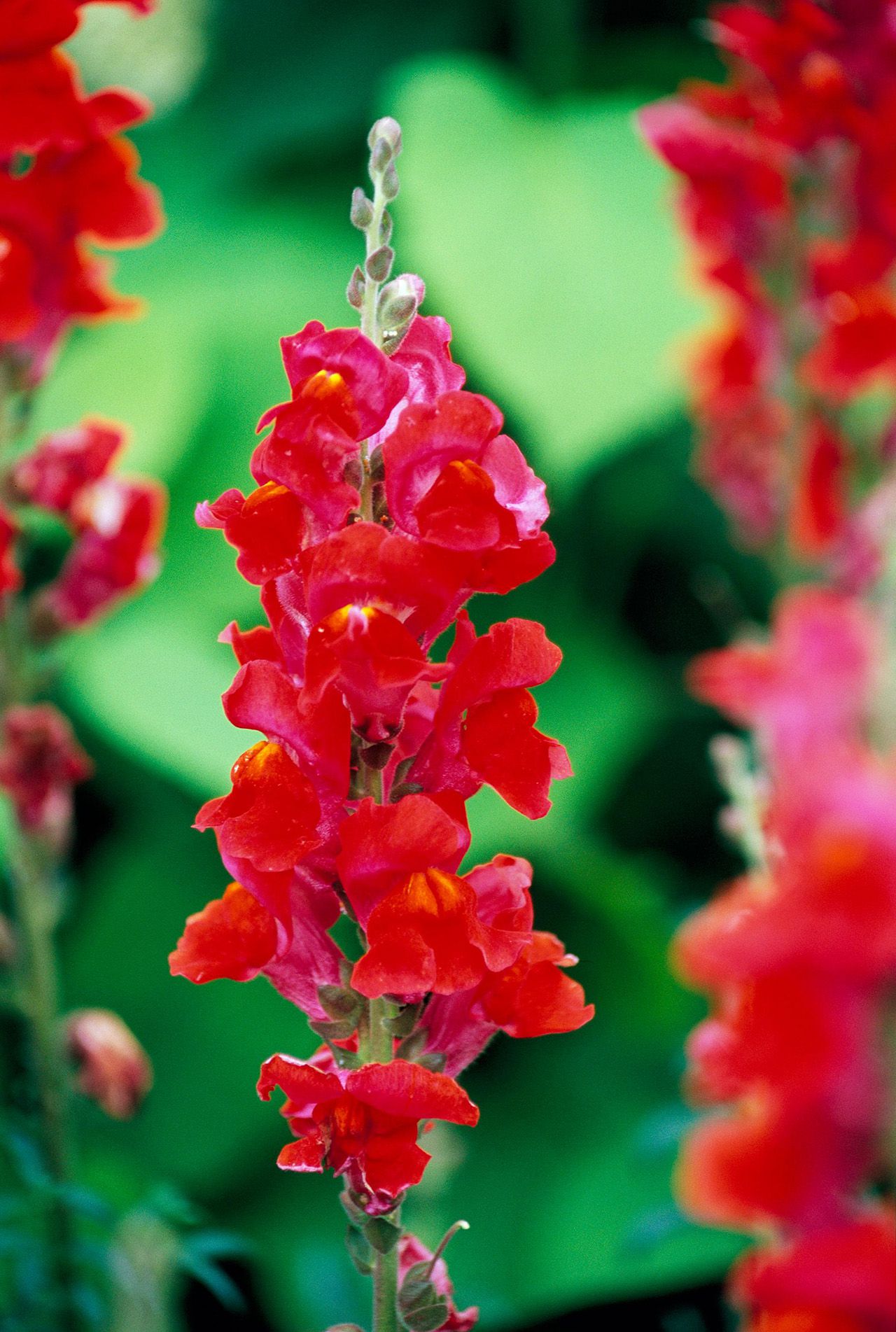
In addition to its shape, the vibrant colors of the Snapdragon flower also hold significance in conveying loss. The flowers come in a variety of hues, including white, yellow, pink, orange, and red. Each color has its own meaning, but when combined, they represent the different stages of grief. White symbolizes purity and innocence, yellow represents friendship and happiness, pink signifies admiration and gratitude, orange conveys warmth and optimism, while red represents love and passion. These colors together reflect the complex emotions one experiences when dealing with a loss, from the initial shock and denial to acceptance and reminiscing about happy memories.
Another interesting aspect of the Snapdragon flower is its ability to attract pollinators through its vibrant colors and fragrance. This symbolism can be interpreted as a representation of the deceased person’s life and their ability to touch the lives of others. Just like how the flower attracts pollinators, our loved ones have left an impact on those around them, making their presence felt even after they are gone.
In some cultures, the Snapdragon flower is also associated with supernatural beliefs and has been used in rituals and spells to communicate with the spirits of the deceased. This adds another layer of significance to the flower’s symbolism of loss, as it represents the connection between the living and the departed.
The Snapdragon flower holds deep meaning in representing loss. Its vibrant colors and unique appearance symbolize the deceased’s life and their impact on others. It serves as a reminder to cherish and honor the memories of our loved ones who have passed away. Whether used in funeral arrangements or as a tribute at a gravesite, the Snapdragon flower is a beautiful and poignant way to convey the feelings of grief and remembrance.
Gladiolus
Flowers have been used throughout history to convey deep emotions and meanings. Each flower holds its own unique symbolism, making them a popular choice for gifts or as a way to express one’s feelings. One particular flower that has been associated with loss and grief is the gladiolus.
The gladiolus is a striking flower, known for its tall stems and variety of colors. It is native to Africa and mainly grows in the Mediterranean region, but can also be found in other parts of the world. The name “gladiolus” comes from the Latin word “gladius”, which means sword. This is because of its long, pointed leaves that resemble a sword. In ancient Rome, gladiolus flowers were often used in gladiator fights, where they were tossed into the arena to symbolize victory and courage.
Despite its historical association with strength and bravery, the gladiolus holds a deeper meaning when it comes to loss and grief. Its tall and upright stems are seen as a representation of strength and character, standing firm even in the face of adversity. This symbolism is particularly meaningful when someone is going through a difficult time such as the loss of a loved one.
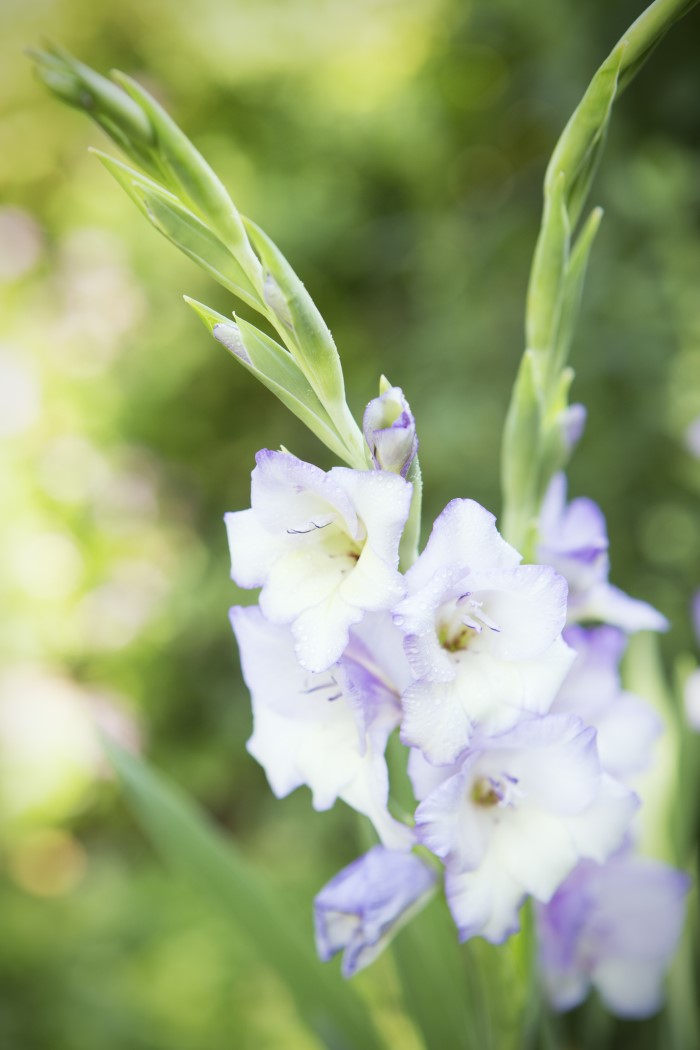
Moreover, the gladiolus comes in a wide range of colors, including red, pink, purple, yellow, and white. Each color holds its own significance, but collectively they represent the different stages of grief one goes through after losing someone special. For instance, red symbolizes love and passion, pink represents admiration and compassion, purple signifies mourning and remembrance, yellow conveys sympathy and friendship, and white symbolizes purity and innocence.
In addition, the gladiolus also carries a message of hope and resilience. Despite its delicate appearance, this flower is surprisingly sturdy and can withstand harsh weather conditions. It is often used as a reminder that no matter how difficult the situation may seem, one has the strength and resilience to overcome it.
The gladiolus is a flower that conveys grief in a meaningful way. Its tall stems and variety of colors represent strength, character, and the different stages of grief. It serves as a beautiful and poignant reminder that despite the pain of loss, one can find the courage to carry on and eventually heal.
Carnation
The carnation is a popular flower commonly used in floral arrangements for various occasions. It is known for its broad range of colors and striking appearance, making it a favorite among florists and recipients alike. However, one particular meaning associated with the carnation stands out – that of loss.
When we think of loss, we often associate it with feelings of sadness, grief, and despair. While these emotions are certainly valid and natural, there is another aspect of loss that is often overlooked – admiration and love. This is where the carnation comes in, as it carries the dual meaning of both loss and admiration/love.
In many cultures, the carnation is considered a symbol of deep love and affection. Its delicate petals and sweet fragrance make it a perfect gift to express heartfelt emotions towards someone special. The flower is also associated with admiration and respect, reflecting the purity and innocence of true love.

So how does the carnation connect to the concept of loss? When we lose someone we love, whether it be through death or separation, we experience a sense of emptiness and longing. However, this feeling is often accompanied by fond memories, gratitude, and deep admiration for the person we have lost. The carnation, with its multiple meanings of love and loss, captures this complex mix of emotions perfectly.
Moreover, certain colors of the carnation have specific meanings when it comes to loss. For instance, pink carnations are often used to represent remembrance and gratitude, while white carnations symbolize pure love and innocence. Red carnations, on the other hand, are associated with deep love and admiration, making them a poignant choice for honoring someone who has passed away.
Another interesting aspect of the carnation’s association with loss is its use in arrangements for the young. In some cultures, carnations are used as funeral flowers for children, representing their innocent and pure souls. They are also commonly included in arrangements for baby showers or christenings, symbolizing the new life and potential of a child. This use of carnations in arrangements for the young further highlights the flower’s connection to loss and admiration.
The carnation may be commonly associated with love and admiration, but it also carries a powerful meaning of loss. Its ability to represent both sides of this complex emotion makes it a fitting choice for honoring and remembering loved ones who have passed away. So the next time you receive or give a bouquet of carnations, remember that it is not just a beautiful flower, but also a symbol of deep love and admiration, even in times of loss.
Lily of the Valley
When it comes to expressing emotions and sentiments, flowers have always been a popular and effective choice. Different flowers hold different meanings, and people often use them to convey a message without having to say anything at all. One such flower that holds a special meaning is the Lily of the Valley.
Flowers have been used to express loss and grief throughout history, and the Lily of the Valley is no exception. This delicate and elegant flower has long been associated with innocence and purity, making it a meaningful symbol when it comes to mourning the loss of a loved one, particularly a child.
The sweet fragrance of the Lily of the Valley is one of its defining characteristics, and this attribute adds an extra layer of significance to its use in arrangements for children. The sweet fragrance conveys a sense of innocence and purity, which are qualities often associated with children. It also serves as a reminder of the good memories shared with the child, adding a touch of comfort to those who are grieving their loss.
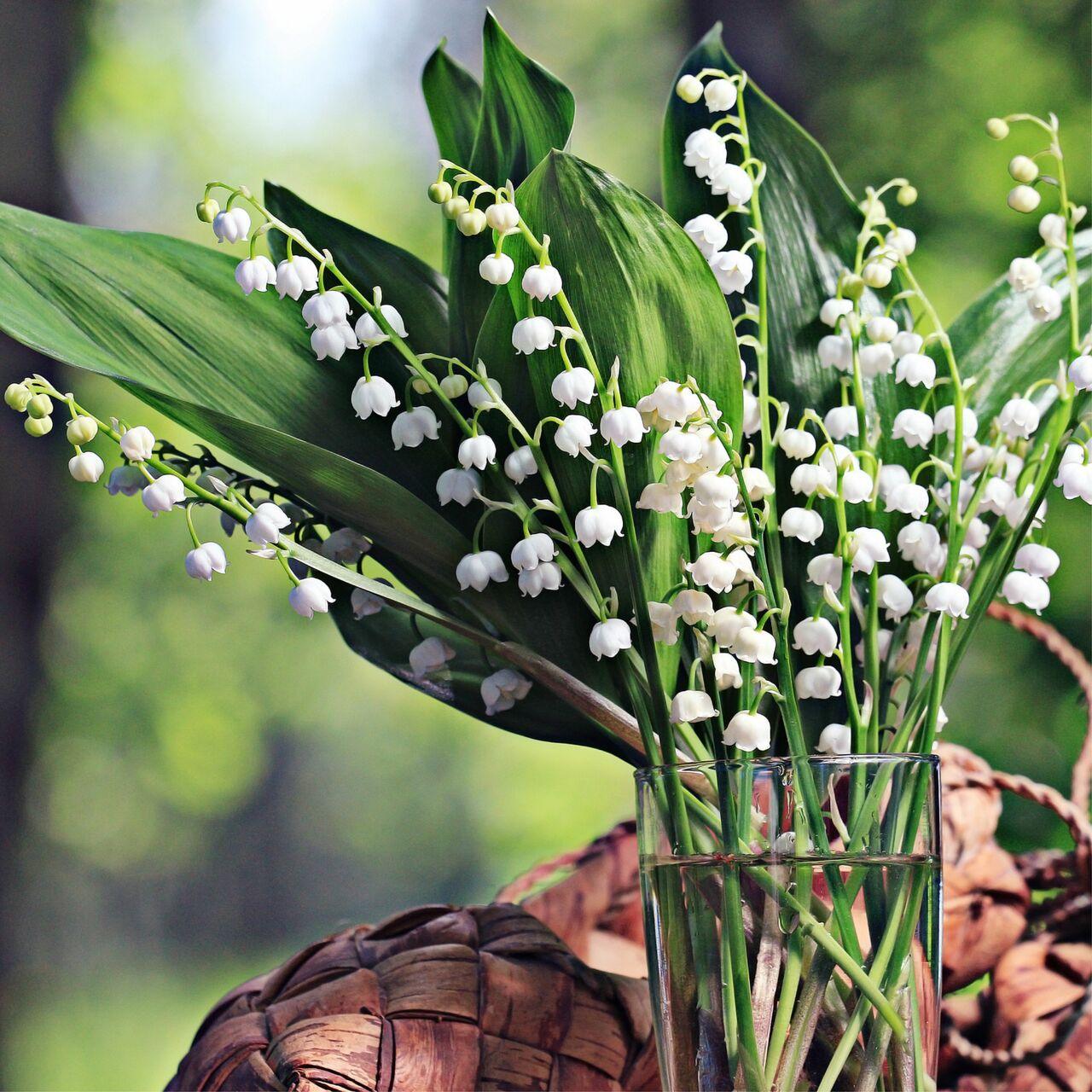
Lilies of the Valley are often used in funeral arrangements for children, either as standalone bouquets or incorporated into larger displays. These delicate white flowers are visually striking and bring a sense of peace and calm to the atmosphere, providing solace to those who are mourning the loss of a child.
Aside from being used in funeral arrangements, the Lily of the Valley is also commonly included in sympathy gifts and cards. Its presence serves as a token of support and condolences, conveying the message that the sender is thinking of the bereaved family during their time of sorrow.
In Christian symbolism, the Lily of the Valley is often associated with the Virgin Mary, making it a fitting symbol for the loss of a child. In this context, the flower represents the purity and innocence of the departed child and is seen as a symbol of hope and new beginnings.
The Lily of the Valley holds a special meaning when it comes to expressing loss, particularly the loss of a child. Its delicate appearance and sweet fragrance serve as a tribute to the innocent and pure nature of children, bringing comfort and solace to those who are grieving their loss.
Stephanotis
Stephanotis is a beautiful and delicate flower that holds a special meaning when it comes to loss. Its elegant white blooms symbolize the fragility of life, and serve as a reminder of the impermanence of our existence.
The name Stephanotis comes from the Greek words “stephanos” meaning crown, and “otis” meaning ear. This is fitting, as the flower resembles a small, delicate crown with its cluster of waxy white flowers atop a long stem. It is also commonly known as Madagascar jasmine or bridal wreath, due to its use in wedding bouquets and its sweet, intoxicating fragrance.
While Stephanotis has been used for centuries in celebrations and ceremonies, it is also associated with loss and mourning. In Victorian times, the language of flowers was used to convey messages and emotions, and Stephanotis was often given to those grieving the loss of a loved one. The pure white color of the flower represents innocence and purity, while its delicate appearance serves as a reminder of how fragile and fleeting life can be.
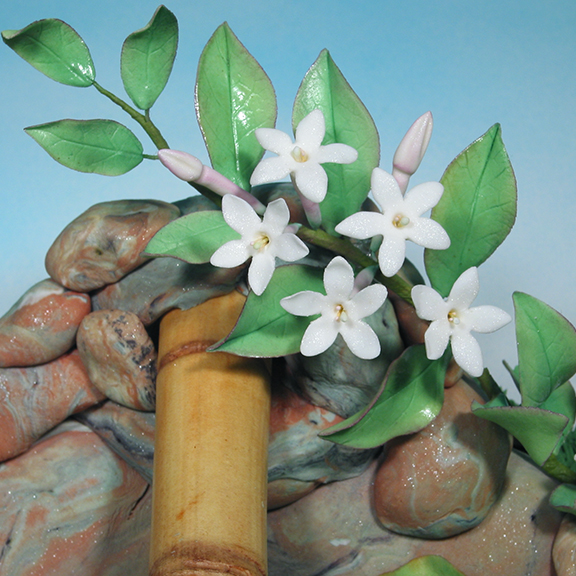
In Chinese culture, Stephanotis is seen as a symbol of sorrow and longing, and is often used in funerals and memorial services. Its graceful beauty is believed to bring comfort and peace to those who are mourning the loss of a loved one.
In addition to its symbolism for loss and grief, Stephanotis also holds significance in Hinduism. In this religion, the flower is associated with Lord Vishnu, the preserver and protector of life. It is said that the flowers of the Stephanotis plant never touch the ground, and are always offered to the deity as a symbol of the everlasting cycle of life and death.
Aside from its rich cultural and symbolic significance, Stephanotis also has practical uses when it comes to honoring the memory of a loved one. Its ability to thrive in a variety of conditions makes it a popular choice for memorial gardens or as a potted plant to keep in remembrance of someone special. Its sweet fragrance is also believed to attract spirits, making it a comforting presence for those grieving.
The meaning of loss associated with Stephanotis is rooted in its delicate beauty and symbolism of life’s impermanence. This flower serves as a gentle reminder to cherish every moment we have, for life is precious and fragile. Whether given as a gesture of sympathy or used to honor the memory of a loved one, Stephanotis serves as a poignant symbol of the emotions that come with loss and the resilience of the human spirit.
Gardenia
Gardenias are beautiful, fragrant flowers that are often associated with loss and remembrance. These flowers have a strong and sweet aroma that represents the beauty of life and the memories of those who have passed away. Gardenias are often given as gifts or used in funeral arrangements to convey the sorrow and grief of losing a loved one.
The gardenia flower has been used for centuries in various cultures as a symbol of love, purity, and innocence. It is believed that these flowers were first brought to Europe from Asia in the 18th century by explorers who were enchanted by their exquisite appearance and fragrance. In Victorian times, gardenias were highly prized as ornamental flowers and were often used in bouquets and floral arrangements to express love, sympathy, and admiration.
In the language of flowers, gardenias have multiple meanings, including secret love, purity, and joy. However, when it comes to expressing loss and grief, these flowers hold a special significance. The sweet fragrance of gardenias is said to represent the beauty and sweetness of the deceased’s life. This delicate scent can evoke memories and emotions, making it a perfect flower for honoring the life and legacy of a loved one who has passed away.
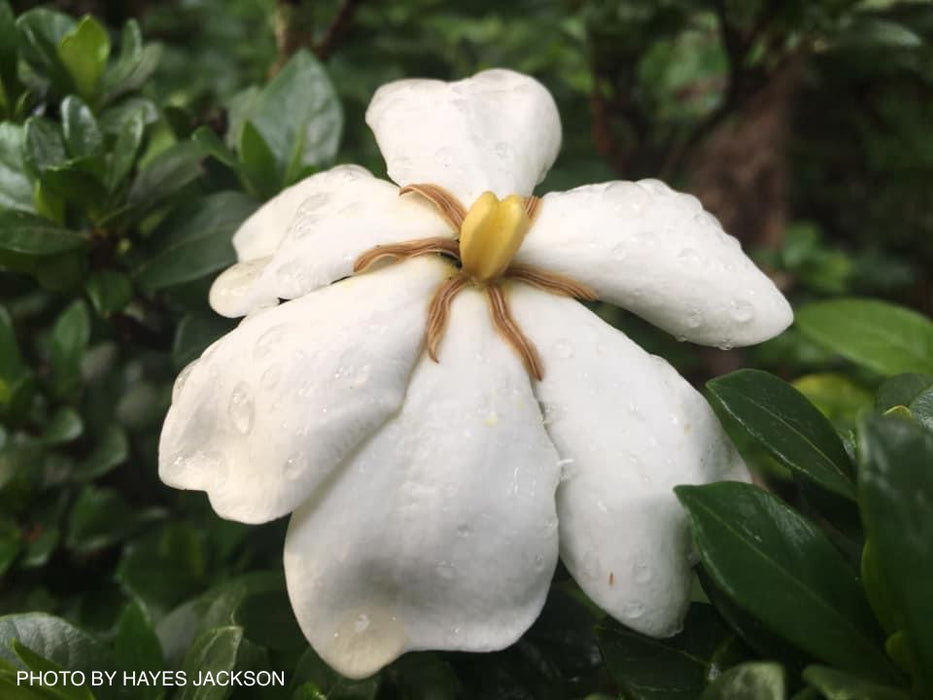
Furthermore, gardenias are known for their pure white color, which symbolizes innocence and spirituality. In many cultures, white flowers are traditionally used in funerals and other mourning ceremonies as a symbol of paying respects to the deceased and their journey to the afterlife. As such, gardenias are often chosen as a flower of choice for funeral services, memorial gardens, and gravesites.
The symbolism of gardenias in representing loss and conveying grief extends beyond its fragrant aroma and pure white petals. These flowers also have a short lifespan, just like human life, which adds to their poignancy. The fleeting nature of gardenias reminds us of the transience of life and the importance of cherishing the time we have with our loved ones.
Gardenias are a powerful symbol of loss and remembrance. They represent the beauty of the deceased’s life and embody the sorrow and grief of those who mourn their passing. These flowers serve as a poignant reminder of the preciousness of life and the memories that will continue to live on even after death. Whether given as a gift or used in a funeral arrangement, gardenias hold a special place in honoring the lives of those we have lost.
While all flowers convey thoughtfulness and empathy, these particular blooms express grief, sorrow and sympathy. Their subtle symbolism and fragility make them appropriate for funerary purposes. They remind us of the delicate beauty of life and the power of love, as well as the need to cherish our connections with those we’ve lost.
Conclusion
Flowers have long had a symbolic role in times of grieving and bereavement. Their beauty, fragrance and meaning convey love and respect for those we’ve lost. Funeral flowers provide solace and hope to the living, while honoring those who’ve passed on. They remind us to appreciate each moment we have with our loved ones. While flowers alone cannot take away grief, they can provide some small measure of comfort and sympathy when we need it most. Their quiet presence affirms that even though someone is gone, they remain in our hearts forever.

We’re Emma Carole Paradis and Kimberly Carole, the owners and designers of Impeccable Nest, based in Bedford, New Hampshire. A mother-daughter team with a love of design. Originally from Manhattan Beach, California, now based in Bedford, New Hampshire, we bring a Southern California cool and New England tradition to our design. Not only do we work together…we also live together in a multi-generational home…and a home that they are known to design for others.

